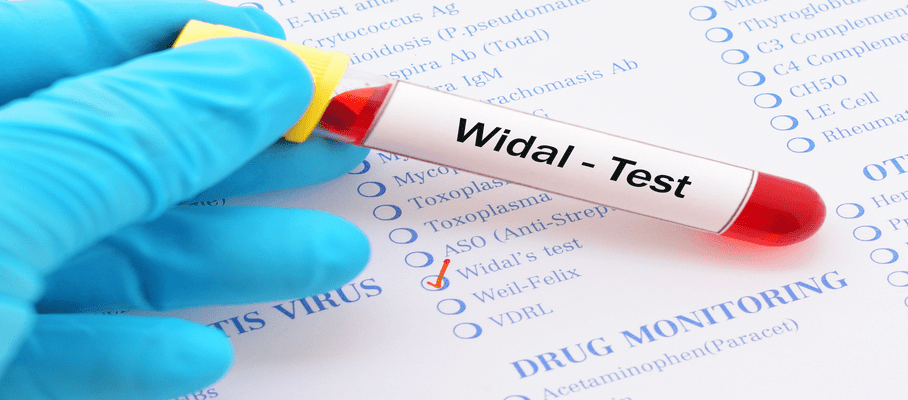Latest Blogs
ESR Test: High ESR Levels Explained - Causes, Symptoms & Health Insights
What Is ESR? The erythrocyte sedimentation rate (ESR) test measures how quickly red blood cells (erythrocytes) settle in a vertical test tube over one hour.. When inflammation occurs in your body, proteins in your blood change, causing red blood cells to clump together and sink faster than normal. This makes the ESR test a useful but nonspecific indicator of inflammatory activity in your body. Doctors often combine the ESR blood test with other diagnostic tools to monitor chronic conditions, detect inflammatory diseases, and assess treatment response. Unlike some blood tests, the ESR test doesn't pinpoint specific conditions but rather indicates whether inflammation is present somewhere in your body. Symptoms of High ESR • Joint-related symptoms: Persistent pain, swelling, and stiffness in joints, particularly common in rheumatoid arthritis and other autoimmune disorders. • Systemic symptoms: Unexplained fever, chills, and general malaise that persist for several days. • Physical changes: Unintentional weight loss, chronic fatigue, and muscle weakness. • Specific symptoms: Headaches (especially in temporal arteritis), vision problems, or jaw pain. • Digestive issues: Abdominal pain, diarrhea, or blood in stools, which can occur in inflammatory bowel disease (IBD). Causes of High ESR A high ESR blood test result indicates that inflammation is present somewhere in your body, but the test alone cannot pinpoint the specific cause. Autoimmune disorders like lupus and rheumatoid arthritis frequently cause elevated ESR levels as your immune system mistakenly attacks healthy tissues. Infections, whether bacterial, viral, or fungal, trigger inflammatory responses that increase ESR readings. Certain cancers (e.g., lymphoma, multiple myeloma) and blood disorders can also cause markedly elevated ESR levels. Inflammatory bowel disease, including Crohn's disease and ulcerative colitis, commonly presents with high ESR blood test results due to chronic intestinal inflammation. Additionally, conditions like tuberculosis, kidney disease, and cardiovascular problems can contribute to elevated readings. Even normal physiological states such as pregnancy, menstruation, and anemia, or certain medications (like oral contraceptives), can elevate ESR results. ESR vs CRP Test Aspect ESR Test CRP Test Measurement Type Indirect measure of inflammation (red blood cell sedimentation rate) Direct measure of inflammation (protein produced by the liver) Response Time Slower to rise and fall Rapid response to inflammation Influencing Factors Also influenced by age, sex, anemia, pregnancy, medications, and red blood cell characteristics Mainly influenced by inflammation Age/Gender Factors Results vary by demographics More standardised across populations Best Application Monitoring chronic conditions Detecting acute inflammation Conditions Associated with High ESR Rheumatoid arthritis: Chronic joint inflammation causing pain and stiffness. Systemic lupus erythematosus: An autoimmune condition affecting multiple organs. Temporal arteritis: Inflammation of arteries in the head and neck. Inflammatory bowel disease: Including Crohn's disease and ulcerative colitis. Tuberculosis: A bacterial infection primarily affecting the lungs. Multiple myeloma: Blood cancer affecting plasma cells. Polymyalgia rheumatica: A muscle pain and stiffness condition. Vasculitis: Inflammation of blood vessels. Kidney disease: Various forms of renal dysfunction. Heart disease: Chronic cardiovascular conditions may show mild ESR elevation due to systemic inflammation but ESR is not a diagnostic marker for heart disease. How to Prepare for an ESR Test • No fasting required: You can eat and drink normally before the test. • Continue medications: Take your regular medications unless your doctor advises otherwise. • Inform your doctor: Mention any supplements or medications you're taking. • Wear comfortable clothing: Choose loose-fitting sleeves for easy blood draw access. • Stay hydrated: Drink adequate water before your appointment. How ESR Levels Vary by Age and Gender Age Normal ESR Test Range Newborns 0-2 mm/hr Children 3-13 mm/hr Men under 50 Less than 15 mm/hr Men over 50 Less than 20 mm/hr Women under 50 Less than 20 mm/hr Women over 50 Less than 30 mm/hr Your ESR normal range tends to increase slightly with age, and women typically have slightly higher normal values than men. These variations occur due to hormonal differences and age-related changes in blood composition. ESR Test Result Interpretation ESR Range Clinical Significance Typical Associations Normal (0-20 mm/hr) No significant inflammation Generally good health status Mildly Elevated Low-grade inflammation Minor infections, early autoimmune activity Moderately High Suggests active inflammation Seen in established autoimmune diseases, infections, or chronic inflammatory states Severely Elevated (>100 mm/hr) Significant inflammation Serious infections, malignancy, and temporal arteritis Remember that ESR results must always be interpreted alongside your symptoms, medical history, and other diagnostic tests for accurate assessment. Treatment for High ESR Levels Treatment for elevated ESR results focuses on addressing the underlying cause of inflammation rather than lowering the ESR itself. Your doctor will develop a personalised treatment plan based on diagnostic findings and clinical assessment. For autoimmune disorders like lupus or rheumatoid arthritis, treatment may include anti-inflammatory medications, immunosuppressive medicines, or biologic therapies. Infections causing elevated ESR levels require appropriate antimicrobial treatment, such as antibiotics for bacterial infections or antiviral medications for viral causes. If tuberculosis is identified as the cause of your high ESR test results, you'll need a comprehensive anti-tuberculosis treatment regimen lasting several months. For inflammatory bowel disease, treatment might include dietary modifications, anti-inflammatory medicines, and immune system modulators. Managing Inflammation to Lower ESR Reducing ESR levels requires a comprehensive approach combining medical treatment with lifestyle modifications. Adopting an anti-inflammatory diet rich in fruits, vegetables, whole grains, and omega-3 fatty acids may help reduce systemic inflammation. Regular physical activity, appropriately modified for your condition, can decrease inflammatory markers throughout your body. Stress management techniques like meditation, yoga, or deep breathing exercises may help lower inflammatory responses. Adequate sleep is essential, as poor sleep can increase general inflammatory markers such as ESR and CRP. Maintaining a healthy weight reduces inflammatory burden, while limiting alcohol consumption and avoiding smoking are equally important for managing inflammation effectively. When to Seek Medical Help You should contact your doctor if you experience persistent symptoms suggesting inflammation or infection. Unexplained fever lasting more than a few days, significant joint pain and swelling, or chronic fatigue interfering with daily activities warrant medical evaluation. If you've been diagnosed with an inflammatory condition and notice worsening symptoms despite treatment, prompt medical attention is necessary. An ESR level exceeding 100 mm/hr often indicates a serious underlying condition such as infection, malignancy, or temporal arteritis, and warrants prompt medical evaluation, as they may indicate serious conditions like malignancy, severe infection, or temporal arteritis. Conclusion Understanding your ESR test results helps you and your doctor work together to manage inflammatory conditions effectively. Whether you're monitoring rheumatoid arthritis, investigating unexplained symptoms, or tracking treatment response, the ESR blood test provides valuable insights into your body's inflammatory status. Remember that elevated ESR levels indicate inflammation, but don't specify the exact cause. Your doctor will interpret results alongside your symptoms, medical history, and other diagnostic tests to develop an appropriate treatment plan. Regular monitoring helps track disease progression and treatment effectiveness. At Metropolis Healthcare, we make accessing reliable diagnostic services simple and convenient. With our comprehensive portfolio of over 4,000 tests and profiles, including specialised inflammatory markers and complete health assessments, you can trust our advanced laboratories to deliver accurate results that guide your healthcare decisions. Our extensive network of 10,000+ touchpoints across India ensures that quality diagnostic care is always within reach, whether you choose home sample collection or visit one of our centres. FAQs What is the normal ESR range? Normal ESR test ranges vary by age and gender: men under 50 should have less than 15 mm/hr, while women under 50 should have less than 20 mm/hr, with slightly higher ranges for older adults. Can ESR be used to diagnose diseases? The ESR test cannot diagnose specific diseases but serves as a valuable screening tool to detect inflammation, requiring additional tests for the precise diagnosis of underlying conditions. What are the symptoms of high ESR? High ESR blood test results may indicate inflammation, causing symptoms like persistent fever, unexplained weight loss, chronic fatigue, joint pain, and muscle aches requiring medical evaluation. References https://medlineplus.gov/lab-tests/erythrocyte-sedimentation-rate-esr/ https://www.ncbi.nlm.nih.gov/books/NBK557485/ https://www.healthdirect.gov.au/erythrocyte-sedimentation-rate-ESR-test https://my.clevelandclinic.org/health/diagnostics/17747-sed-rate-erythrocyte-sedimentation-rate-or-esr-test








